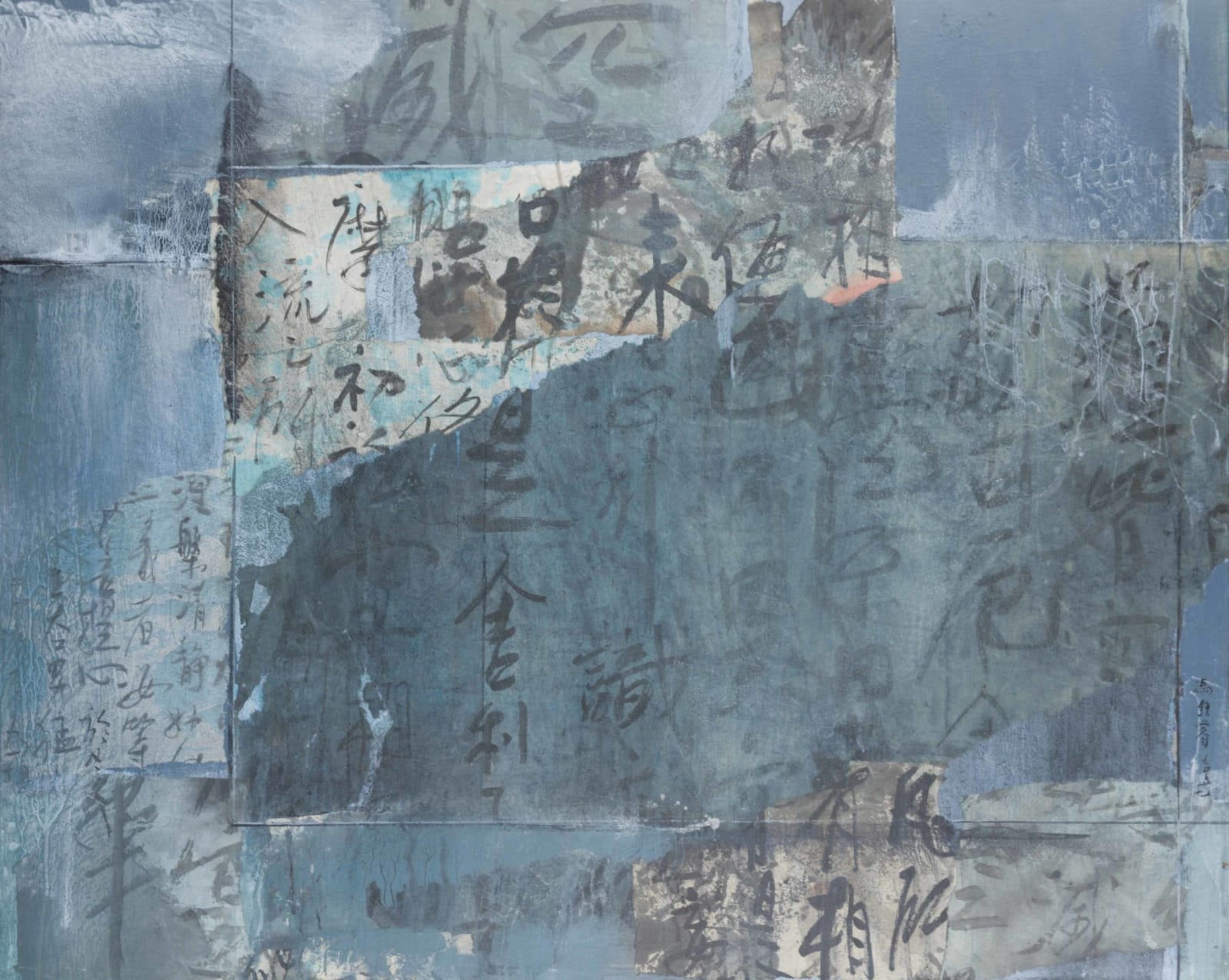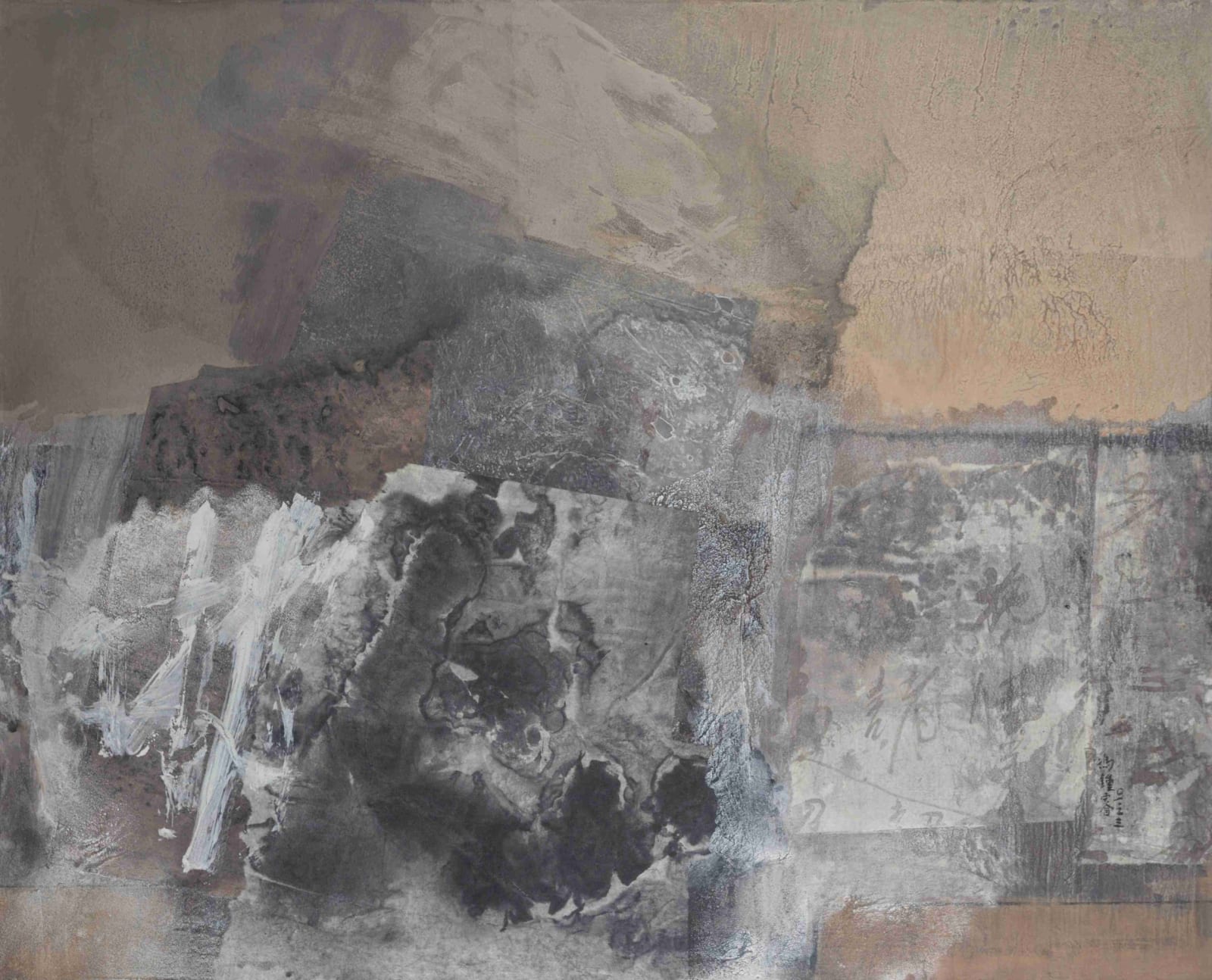馮鍾睿的畫作《2019-10-29》現正於黃埔NOC咖啡店的藝術牆展出,NOC特別專訪這位五月畫會先驅,談論他的創作歷程。
問:您出生於中國河南,現居舊金山創作,這段多元文化經歷如何影響您的作品?
答:在中國成長、舊金山生活,我無法擺脫中國文化的深遠影響。海外生活拓展了我的視野,讓我更能反思自身成長。所謂創作,就是在前人奠定的藝術表現基礎上繼續推進。唯有豐富開闊的經歷,才能更好地運用既有基礎。我年邁仍居於此,只因習慣這裡的工作環境。
問:能否談談正在NOC黃埔展出的《2019-10-29》?
答:我深深著迷於甲骨文的形式美。2015年返鄉河南時,我在當地博物館購買了幾本甲骨文出版物,開始實驗不同字形。漢字、甲骨文...對我而言都是視覺美學與圖像元素。我用尖銳工具在塗塑膠片上刮出字形,再以拓印方式轉移至畫布。
問:創作《2019-10-29》是否有特定流程?完成一件作品通常需要多久?
答:每幅畫所需時間不同。有了構想後,執行可能充滿挑戰。駕馭材料需要技巧,這只能透過實踐累積。
問:您最喜歡在什麼時段創作?
答:我白天工作。固定作息是我的工作習慣。
問:您的作品近期被巴黎龐畢度中心(Centre Pompidou)收藏,同時見於私人收藏與公共建築。在哪裡看到作品最讓您自豪?
答:收藏家與畫廊出於不同原因收藏我的畫。作品送出時,感覺像嫁女兒。希望新歸宿美滿,觀者能真心欣賞,從中獲得生活樂趣。博物館展出的優勢在於能讓更多人看見作品。
問:您以「2000年後」系列聞名,這些混合媒材拼貼作品細節極為講究。是什麼開啟這段創作旅程?
答:2000年後,我想突破傳統水墨。旅行時常注意到古建築紋理,殘垣斷壁蘊含無盡韻律與魅力。我認為材料運用需要新技法,於是設法讓顏料呈現那種質感。
問:藝術對您與世界為何重要?
答:對我而言,享受繪畫很重要——這也是我唯一的能力。對世界來說,追求美是人類共同願望,不該存在利益衝突。
問:您最欣賞的藝術家是?
答:我欽佩宋代山水畫家,他們的作品都令我感動。西方藝術家中,我喜歡莫內的日出。他運用「皺法」作畫,稱其為中國畫也不為過。我也喜愛克利的作品。依照謝赫六法,克利的畫生氣盎然,用筆與構圖俱佳。紐約學派的抽象表現主義也吸收東方藝術精髓,我正是在其影響下轉向抽象繪畫。
問:對剛起步的年輕藝術家有何建議?
答:希望他們記住兩點:首先必須全心投入,真正熱愛,唯有畫得好才能感到滿足。其次不要追隨他人,要創造所謂的個人風格。
問:最深刻的童年記憶是?
答:我的童年回憶十分美好。「父慈子孝」「兄友弟恭」的傳統讓我的青春充滿快樂。若沒有戰亂造成的混亂,本可更加美好。
問:若非藝術家,您會從事什麼職業?
答:我從小對人體解剖感興趣,手也算靈巧。或許當外科醫生不是大問題。
問:最後但同樣重要的問題,您喜歡咖啡嗎?
答:偶爾喝一杯——喜歡它的香氣。
關於馮鍾睿
藝術家馮鍾睿是著名美籍華裔畫家,以開拓中國繪畫新方向的獨特抽象風格聞名。1950年代末,他與台灣一群前衛華人藝術家共同開創獨特視覺語言。1961年加入極具影響力的五月畫會,成員定期聚會評析彼此作品。數十年來,他的繪畫持續演變,追尋抽象表現的新創意路徑。
Learn more --
https://noccoffeeco.com/en/blog/fong-chung-ray-noc-artist-series/









